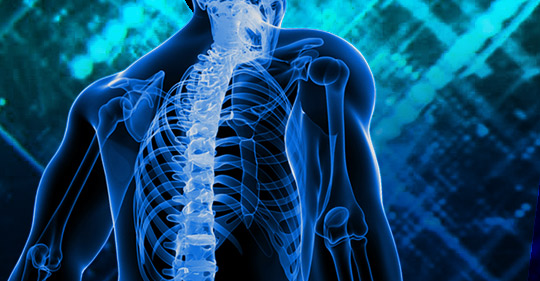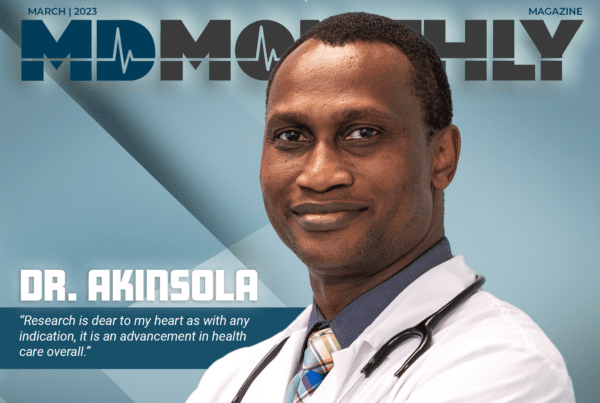Compression Fractures
By: Steven J. Cyr, M.D., FAAOS
Breaking a bone is not an uncommon occurrence. When it comes to breaking a bone, there are many different ways in which that bone may break. Factors contributing to how bone breaks include the energy of the force taken to break the bone, how that force comes into contact with the bone, and the properties of the bone itself. For decades, Orthopaedic surgeons, bone, and extremity experts have categorized and determined appropriate treatment for the many types of broken bones. One common type of fracture involving the spine is called a compression fracture. It occurs when forces on the front of the spine break the vertebral column, creating a wedge deformity of the bone.
In a healthy spine, a compression fracture is the product of a high-energy force that loads the spine suddenly. Compression fractures can happen in motor vehicle accidents or sporting events. The compression fracture occurs in the vertebral body. The vertebral body is the front half of the spinal bone. A compression fracture of the vertebra turns the cylindrical vertebral body into a wedge as it collapses anteriorly. The severity of the wedge can vary and have associated problems. Oftentimes, the wedge is not severe enough to cause anything more than soreness. One possible major problem resulting from a compression fracture is that some of the broken bone can push backward into the spinal canal. These bony fragments can crowd the contents of the spinal canal including the nerves and spinal cord. When this is the case, the patient may have nerve related symptoms such as burning, tingling, numbness, and/or weakness in the extremities. At the level of the spinal cord (above the L2 level), spinal cord injury may occur resulting in incomplete or complete paralysis. The most common symptom of a compression fracture is tenderness in the area directly over and surrounding the fractured vertebra.
Compression fractures can be most easily identified on X-Ray and CT scans. These findings, combined with specific symptoms, and a history of a sudden forceful load onto the spine (termed axial load) are often enough to identify the diagnosis of a compression fracture. An MRI or a whole body bone scan can help to identify the “age” of the compression fracture, in other words, if the fracture happened recently or is old. A CT or CAT scan can help determine the severity of the bone injury as it more accurately reveals the characteristics of the broken bone.
The most common type of compression fracture occurs as a result of aging. With age, the spinal vertebra can lose their strength from a process called osteoporosis. As the bone weakens, the vertebra becomes more prone to failing. The stress carried by the spine, combined with weakened bone, can result in a failure of the vertebral body and, therefore, a compression fracture. This occurs from mild trauma such as a fall from standing height, lifting an object, and even from the mere weight of one’s body. Demineralization can be treated with Vitamin D and Calcium supplements, prescription medications, as well as weight-bearing exercise. Some individuals with compression fracture may look relatively normal while others may have a hunched back. This appearance does not commonly result from just one compression fracture. It is usually the result of several broken, wedged bones leading to collapse of the anterior vertebral bones and an exaggerated curve forward.

Osteoporotic compression fractures do not commonly occur in patients under the age of 60. For both men and women with osteoporosis, approximately 25% will have a compression fracture. Treatment consists of relieving the symptoms, which commonly means pain relief. This can be achieved by ice, pain medication, bracing, and sometimes surgery. If ice, rest, bracing, and medication is not enough, the two minimally invasive surgical options include Vertebroplasty and Kyphoplasty. The purpose of both procedures is to halt any further wedging of the vertebral body. Progressive wedging results in structural problems and abnormal posture, which may inhibit activities of daily living. Vertebroplasty is a procedure in which low viscosity bone cement is injected into the collapsed vertebra, stabilizing the failing vertebra. Kyphoplasty is a similar procedure where the height of the vertebral body is restored, usually with a balloon, followed by injection of the bone cement. This procedure helps reverse the postural problem from a collapsed vertebra. However, it is only effective in a fracture that has not healed yet. It also works best for low-velocity injuries, not those resulting from high-velocity injuries, such as motor vehicle collisions. A vertebroplasty is appropriate for less severe cases where the bone is broken but has not wedged dramatically.
In conclusion, a compression fracture may be present even without significant trauma. Compression fractures may be the source of pain in patients with osteoporosis who have had no injury whatsoever. Therefore, particularly in patients with known osteoporosis, who are over 60 years old, have experienced a sudden, forceful load on the spine, it is prudent to see a Spinal specialist and pursue an appropriate and comprehensive evaluation and plan of treatment.
At The Orthopaedic & Spine Institute, our uniquely trained team of medical professionals and spine surgeon have experience in treating all symptoms and conditions of the spine, from the cervical spine to the coccyx (tailbone). If you suffer from neck or back pain, contact us to schedule a consultation.
Dr. Steven Cyr is one of the nation’s few Mayo Clinic trained spine surgeons. His training included both neurosurgical and orthopedic surgical techniques of the spine. The Mayo clinic is one of the world’s leading medical institution and has ranked number one for orthopedic and neurosurgical training programs in America for more than 20 years. Dr. Cyr is the President and Founder of The Orthopaedic and Spine Institute Medical Centers in the South Texas Medical Center located at 8401 Datapoint Drive, Suite 700, San Antonio, Texas 78229.
(210) 487-7463 or (844) 896-7846 www.saspine.com







Recent Comments